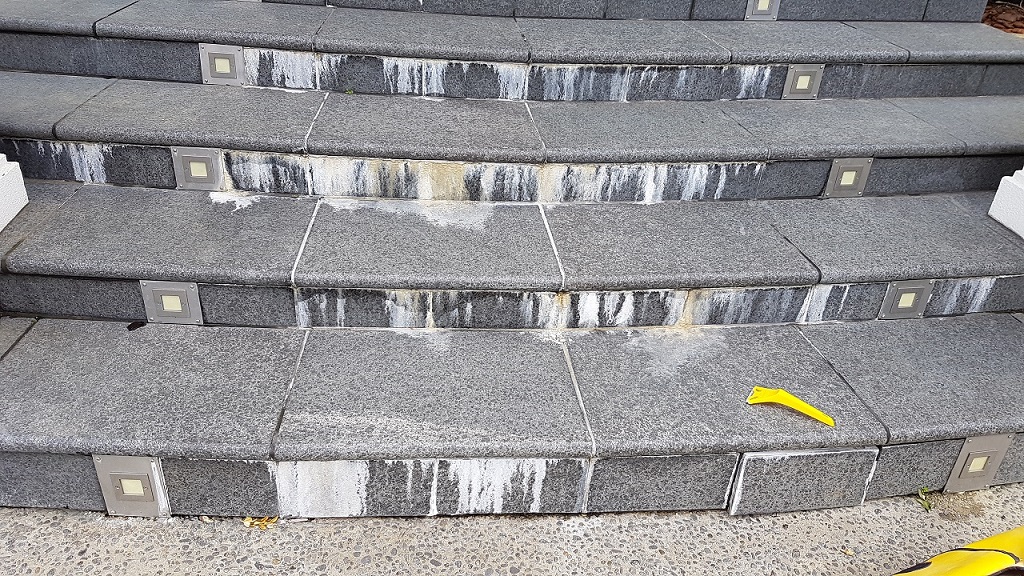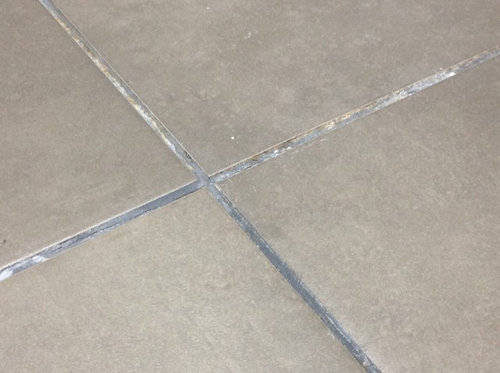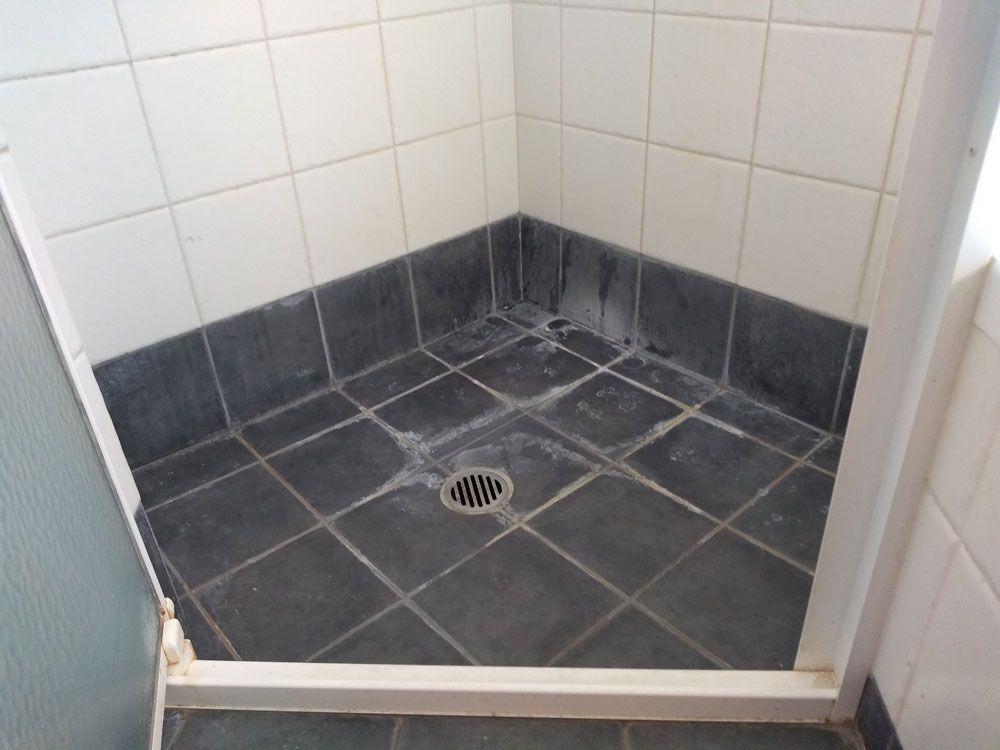Efflorescence is naturally occurring problem caused by oxidised salt from cement based products. Concrete, many adhesives, and many grouts contain cement as a binding agent and if the salt in the cement is exposed to moisture for continued periods it can migrate to the surface where it oxidises in the air into a white crystalized substance called efflorescence.
This is most commonly seen around cracks in concrete paths, or on brick walls, but it is also very common in tiled showers or other tiled wet areas. These areas will have both adhesives and grouts which may contain cement-based ingredients in them. As these areas are wet much of the time (particularly if they do not drain well) efflorescence may occur as a white stain on the grout or tile, and if not frequently removed can build up into a thick, hard, calcium-like crust that is very difficult to remove.
Many tiled showers these days use cement free tile adhesives and epoxy grout (a resin based grout that contains no cement). These have no salt in them and so cannot produce efflorescence.
If efflorescence is a problem in your shower or wet tiled area, the only way to remove it is mechanically remove the cement based grout (which is likely the main source of the salts) and replace it with epoxy grout. While this removes the main source of salt, there may also be salt in the tile adhesive which can continue to product efflorescence, however this is usually at much lower concentrations.
GroutPro are specialists at cement to epoxy grout replacement which in most cases solves the problem.



